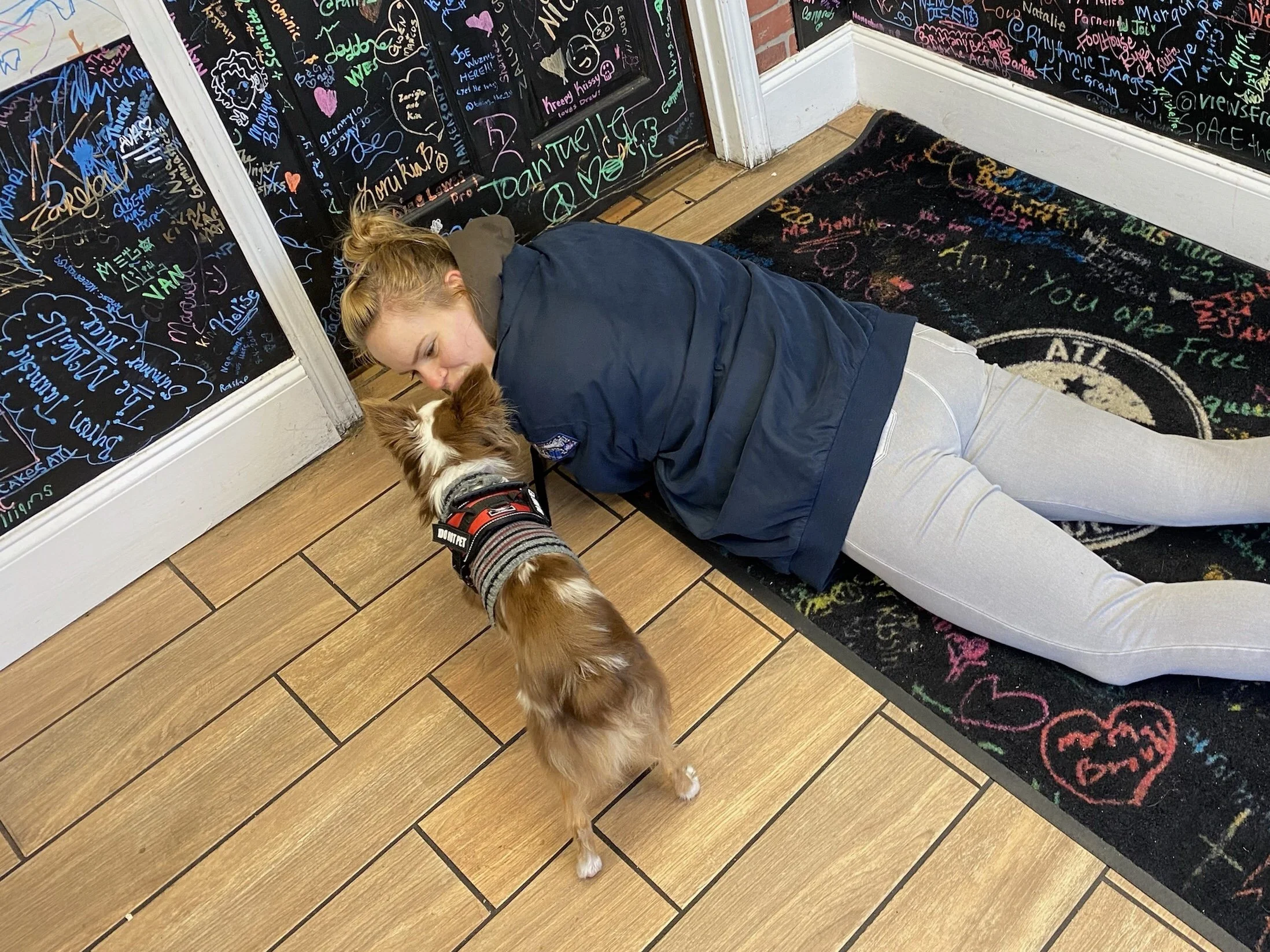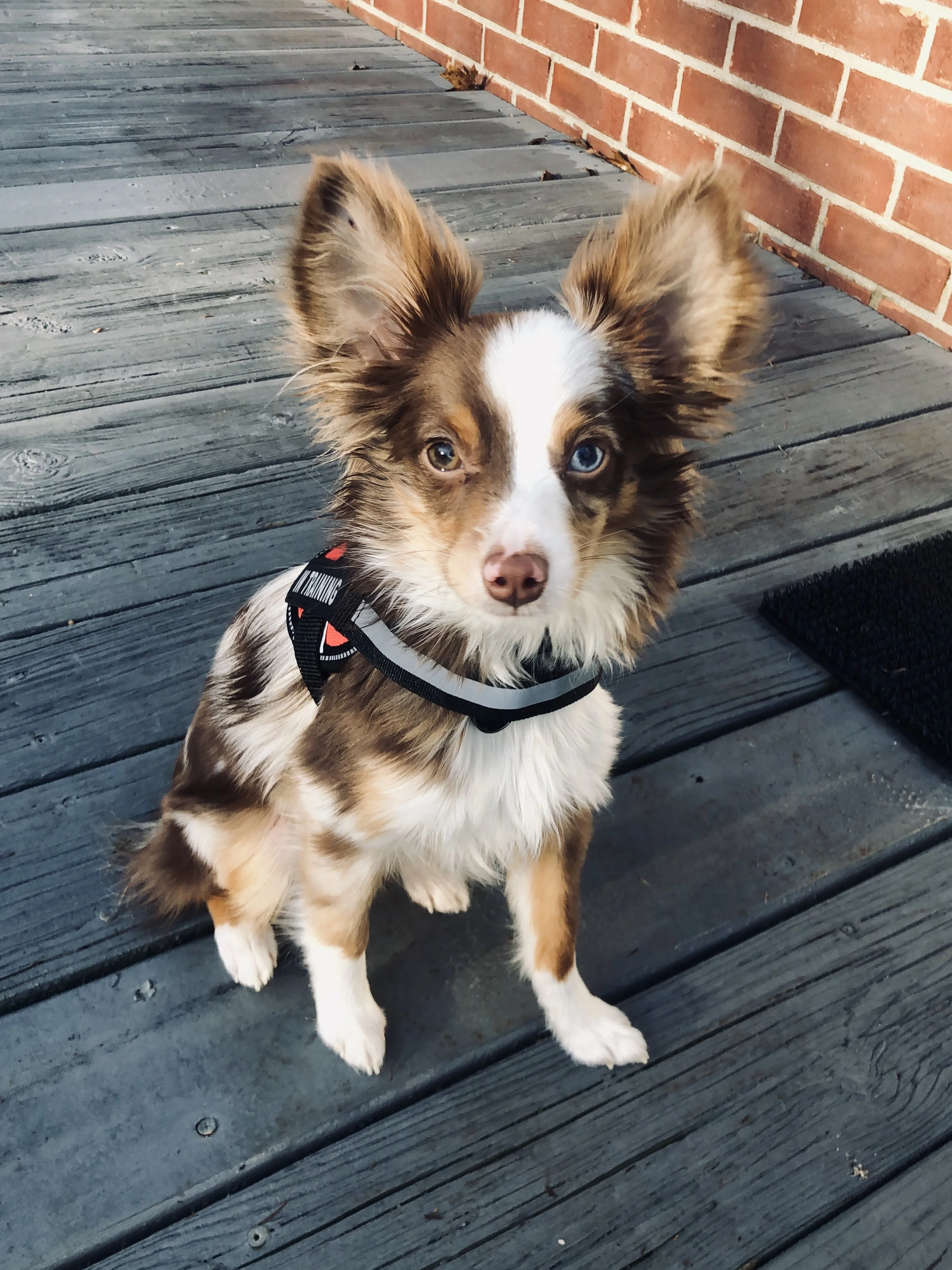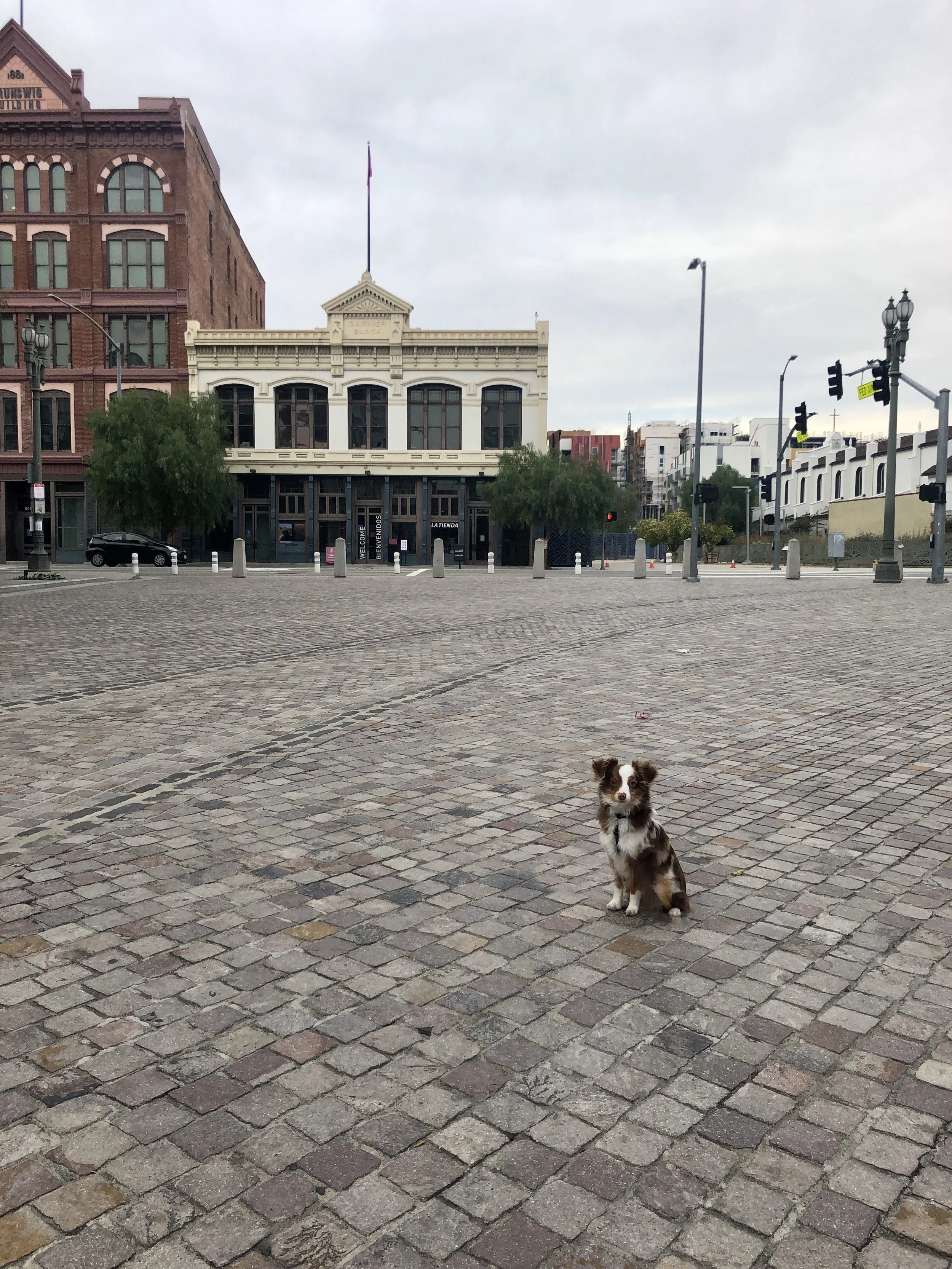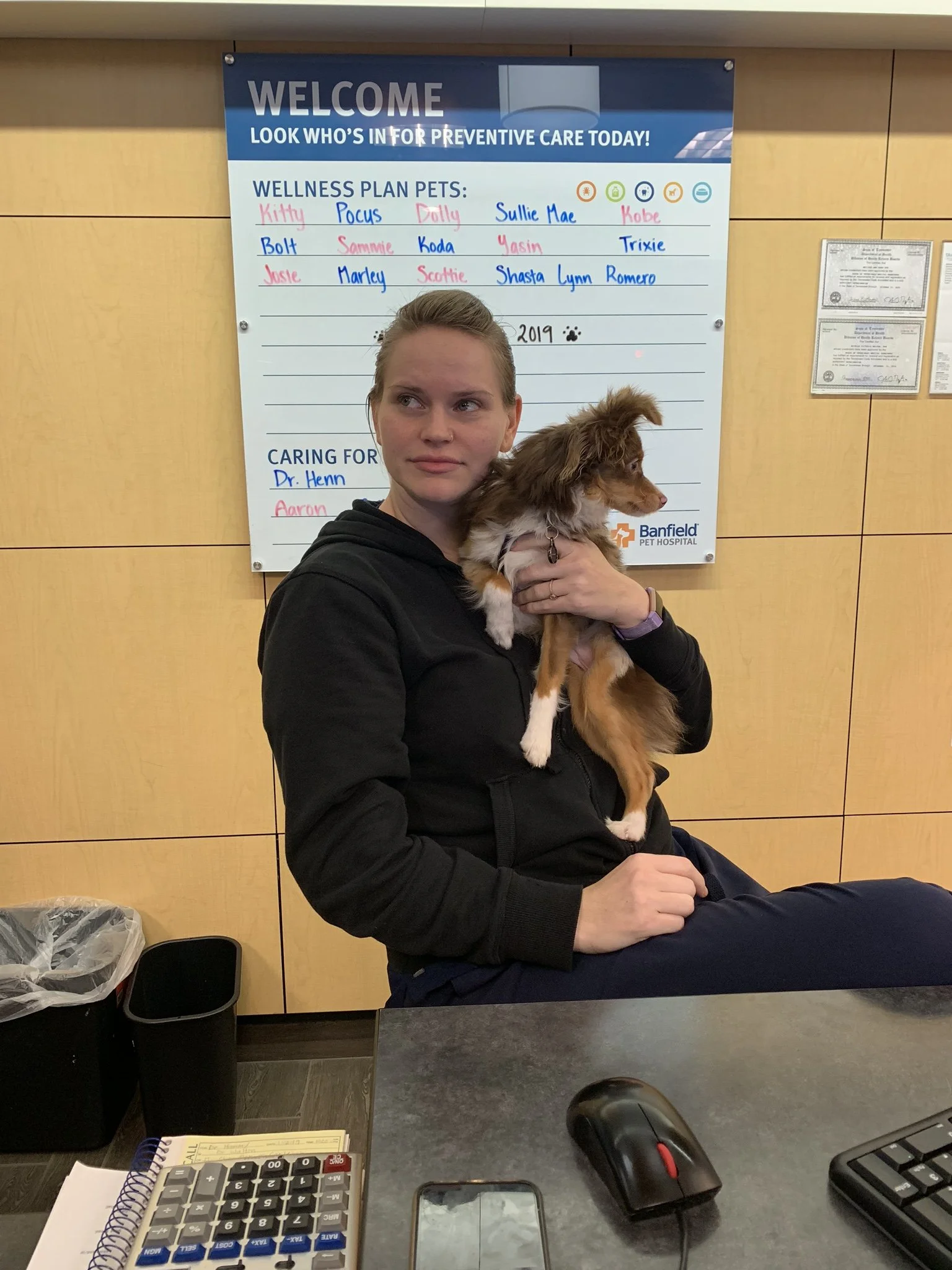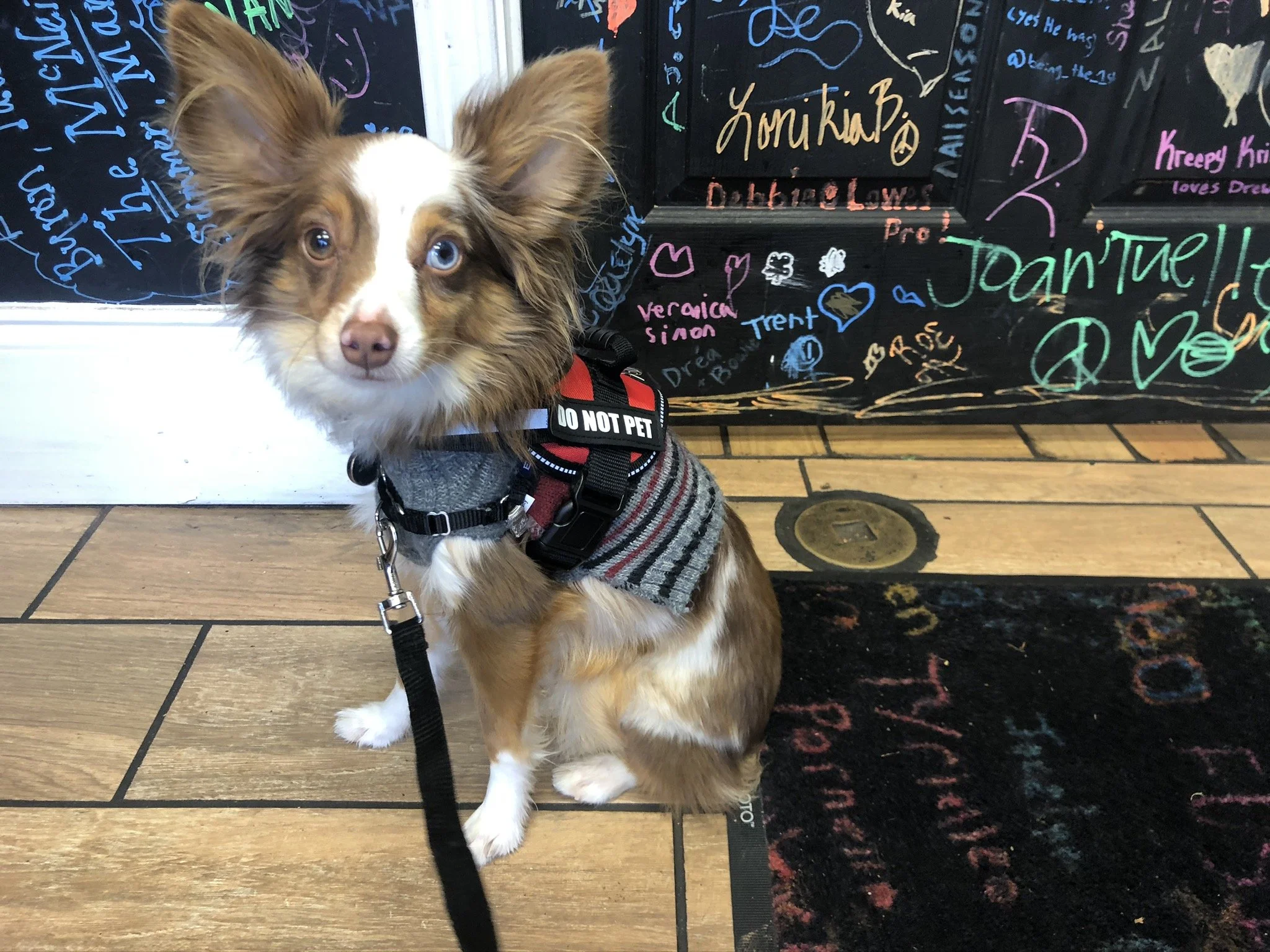🐕🦺This Bond Saved Her Life. Literally.
“I don't know if he's the best service dog in the world, but he's my best service dog. I'll never, ever–in his lifetime or mine–be able to really show him how grateful and appreciative I am, and how much I love him. Because there's just not enough time for me to do that.”
For many people who have grown up surrounded by pets, animals will always hold a special place in their heart.
But what happens when that love for animals turns into a need for the live-saving support they can provide?
That’s exactly what happened to Dréa Kirschenbaum, animal lover, aviator, and adoring caregiver to pets in both Nashville and Atlanta through her business, Fetch Me If You Can.
It’s hard to put into words how the bond between a person and their service dog is so special…
But after hearing Dréa share her unconditional love and gratitude toward Bowie, we’re sure going to try!
A life with no pets never existed
“We had the more traditional pets like dogs and cats, but I’ve had snakes, spiders…
We were definitely that crazy household where at one point, we had like 7 cats… It was just always something that I grew up with. Literally since birth, there was never a day that I've not had a pet.”
The idea of pets being family runs through Dréa’s veins, so much so that she continued prioritizing pet parenthood as an adult.
With 15 dogs and 6 cats (yes, that’s the current count!), she’ll never be without an animal by her side.
One of those dogs is Bowie, the perfect boy she never planned on getting until a walk one day that changed the course of her life.
Seeing a woman walking what appeared to be an Aussie puppy, she struck up a conversation.
Turns out, this “puppy” was actually a Mini Aussie, a dog Dréa had never seen before.
Knowing how smart Aussies tend to be (and seeing how cute the mini ones are), she started making a plan to add a Mini Aussie to her pack.
“I was very particular. In my head, I wanted a blue merle female with blue eyes. And I always joke that Bowie was everything I didn't want at that time, but everything I needed. He's a red merle male, heterochromia…
But when I saw him on a random Facebook page that happened to pop up, it was love at first sight.”
But it wasn’t until after she brought Bowie home that she’d realize he came into her life for a reason. His presence would be vital to her life and well-being.
A new, crucial role for Bowie
“If I didn't have Bowie during that time, especially once he was trained, I don't know if I'd be sitting here right now. I don't know what my life would have shaped out to be.”
Once Bowie was settled in his new home, he quickly showed Dréa just how smart he was.
He started listening to commands and retrieving at just a few months old. Over time, he even learned how to respond to three different languages.
There were times in his puppyhood when Dréa would be working through a particularly rough moment filled with emotions and tears, and he instinctively wanted to make her better.
“He kept bringing me toys because to him, they make him happy, so they’re going to make me happy. And he just kept bringing them, and I’d be crying, but then it would turn to tears of happiness because I’ve got this dog and he’s trying so hard to do anything he feels is going to take me out of that.”
It wasn’t long after that Dréa was diagnosed with depression and anxiety and Bowie quickly transitioned into being a medical alert dog.
Bowie was already very attuned to her. If she started to get heightened, he would pick up on that and alert her.
“He just always had the knack for trying to do what was best for me.”
Knowing when it’s time to work
Like humans, service dogs won’t be working 24/7. But depending on what that dog’s job is, they might be more aware of their surroundings no matter if it’s work or play time.
“There's an underlying layer of these dogs, where they kind of always have that service dog mentality, even when they're in play mode.”
Since Bowie was a medical alert dog, he was always in tune with Dréa’s body and emotions no matter if they were out in the yard or playing inside.
But when it was time to go out in public, Bowie knew it was time to focus.
“The vest is what made him go into ‘work mode,’ especially in public. The minute that vest went on, nothing else mattered. And then when he was done, it was, ‘work done’ and the vest came off. So for him, that was his signifier of ‘hey, you're on duty versus off duty.’”
In addition to the vest, Dréa would communicate with him primarily through ASL when he was working, so that became another signifier for Bowie.
It was particularly useful because he could continue to do his work and know exactly what he needed to do even if they were in a loud or crowded environment.
It was also another way they always stayed in tune with each other, just further deepening their bond.
A bond you can’t easily put into words
“When an animal is doing specific work for you, it does add that extra layer of connection. Not that I love any of my other pets any less, it's not about that. But Bowie is an animal who has quite literally saved my life.”
To Dréa, the bond formed with a service dog will always be something uniquely special compared to one who is just a companion.
These dogs are typically with their human 24/7 and are trained to be on par with their human’s needs, regardless of what the job is.
And in Dréa’s case, she’s immensely grateful for the unconditional love she received from Bowie, even in her darkest moments.
Regardless of if she was having a meltdown, he would be there as if he could say, “what do you need? I got you.”
And now that life feels a little lighter for Dréa, she constantly revisits her love for Bowie.
“I'm healthy, I'm living, I'm happy… There's a lot of components that I quite literally owe to that little being.
You can't explain it enough, because it never matches the magnitude of the love that you have for that lifeline.”
When it was time to put Bowie’s needs first
“I think he's enjoying just being the bestest boy and being able to do all the things that we did together outside of a vest.”
When it comes to retiring a service dog, it typically depends on their breed, their capability, and what they’re trained to do.
Bowie ended up having an early retirement, and it had nothing to do with his service abilities.
Perhaps somewhat ironically, his retirement was due to him growing anxious on flights, something Dréa was previously dealing with often.
“As his handler, I could tell that he wasn't comfortable. And so it just kind of became a point where I had to really sit and think, okay, I don't have that need anymore.”
By that point, she had worked hard to manage and mitigate her anxiety and depression without needing any extra support, so it was the right time.
“He could still do it, but you know, there comes a point where you have to put the dog first. You know, dog over service dog.”
Retiring a service dog is a bittersweet moment, though. It’s a chapter ending in that dog’s book.
“I think any handler would tell you that, regardless of the reasons why they're retiring, it's like you’re losing that piece of lifeline, even though it's not entirely going away.”
Understanding a service dog’s purpose
Even though Bowie’s career was short, Dréa experienced many frustrating moments that other service dog handlers have dealt with as well.
First of all, a service dog is considered medical equipment. This is an animal that is trained to provide a service necessary for their handler’s well-being.
“There are so many components to a service dog's work. They're not a companion when they're working. Of course, they're a companion at home. But when they’re working in public, people need to remember: that's someone's lifeline, not just a cute animal.”
There’s also a lot of misconceptions around what’s required for a dog to be a service dog.
Contrary to popular belief, in the US, there is no official registry or ID (such as a badge or vest) required. The vest is a visual identifier many handlers choose to use because A) It’s a signal for the dog that it’s time to work and B) It's a signal for others that this dog is working.
But it’s not actually required.
“Having grace with that, both as a handler and as a patron, goes a long way in understanding. Research is not hard, you can easily look up online. I know a lot of handlers who carry the little cards with their rights because a lot of people just don’t know.”
Engaging with service dogs puts people who really need them at risk, and if there's anything that Dréa could say to the general public, it would be this gentle reminder: “Don’t put legible working dogs at risk because you want to be with your pet.”
The ADA has this great page with simple bullet points that make it easy (and quick!) to learn everything you need to know about service dogs.
Securing your pet’s future no matter what
Regardless of if your pet is a service animal, a pet who has done extensive obedience training, or one who lives life freely, they’re currently living a life that is comfortable, familiar, and safe.
But if something were to happen to you, would they continue living this life they’ve grown to love?
Putting a Cotl plan in place ensures your pet is taken care of, just the way they’re used to, no matter what happens to you.




